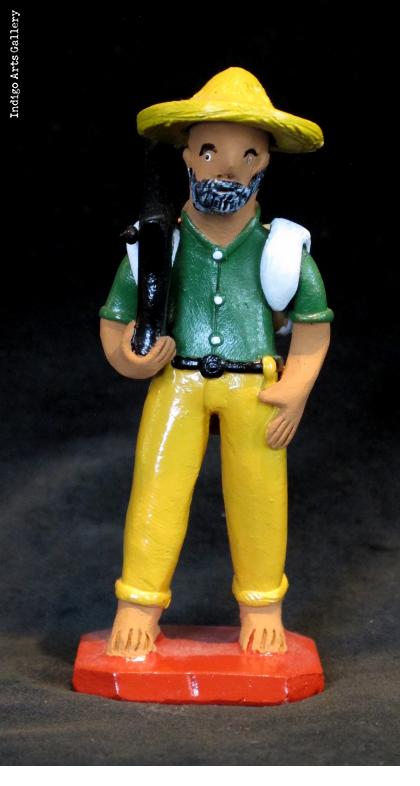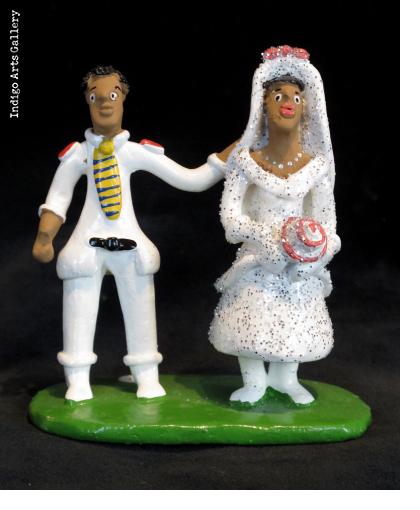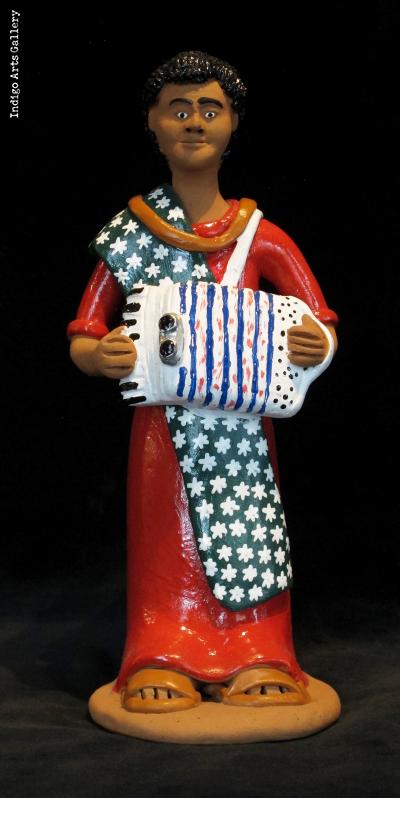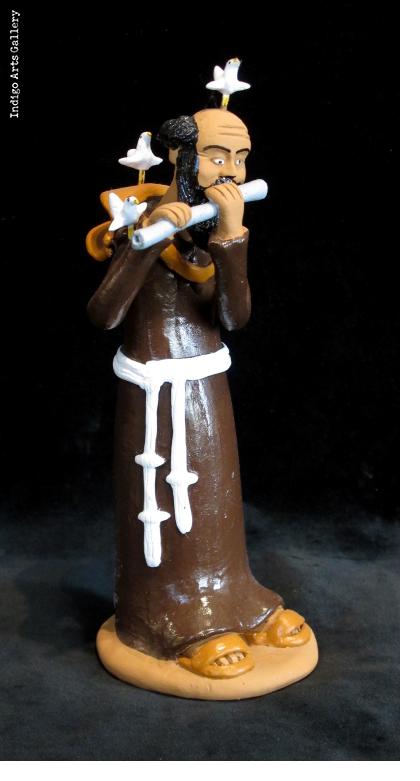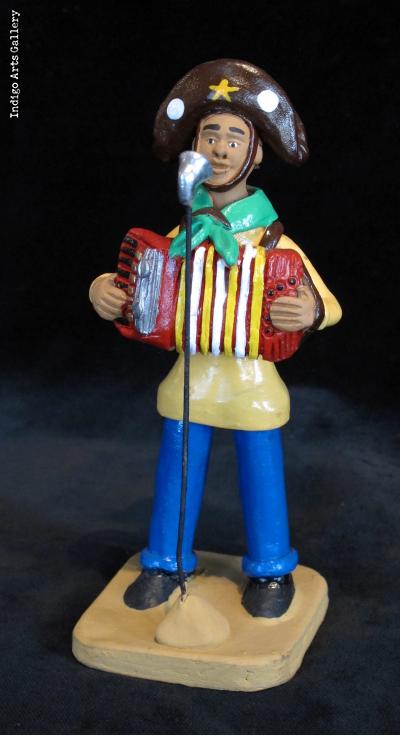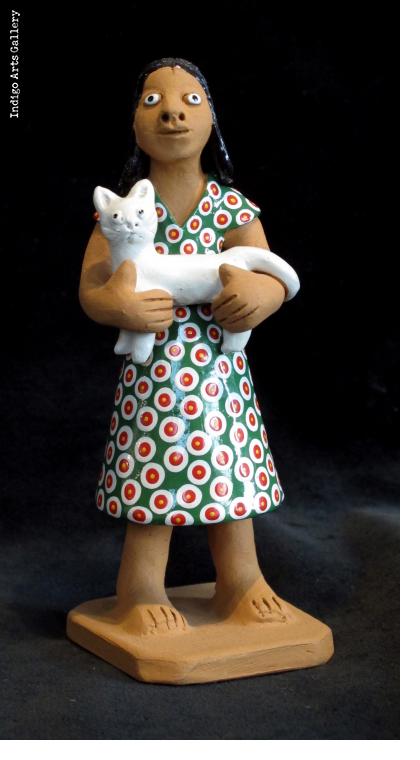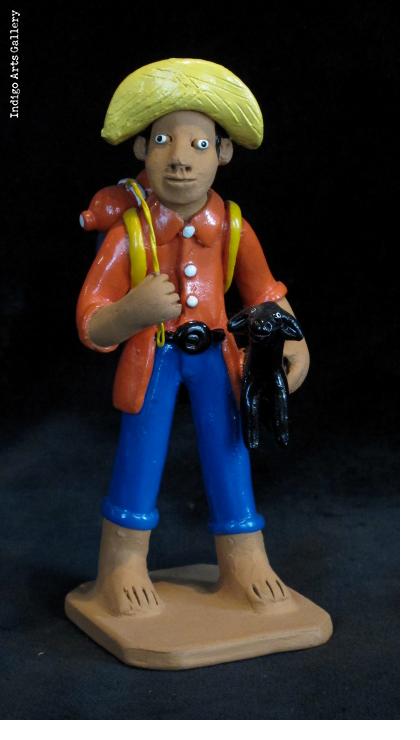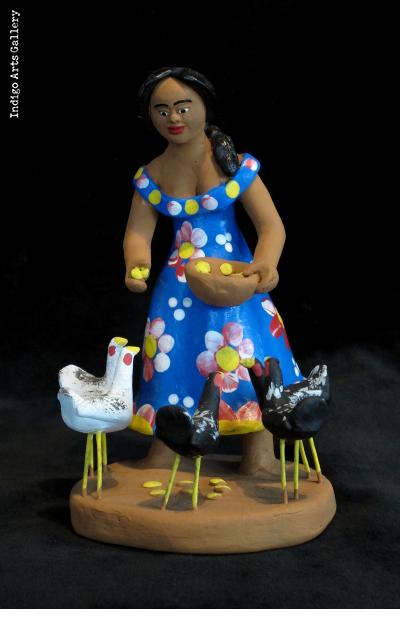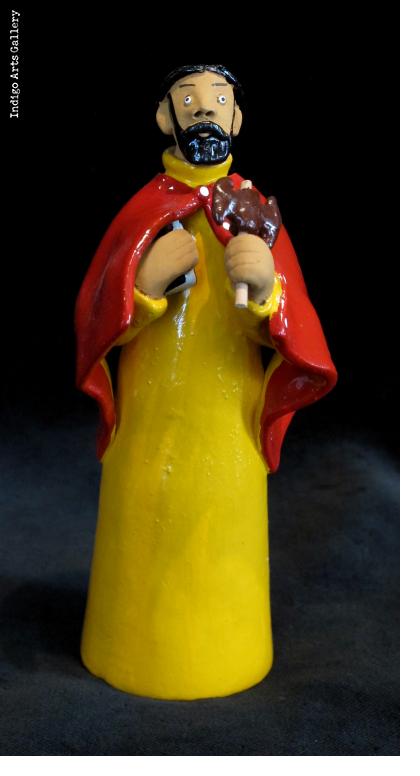These popular clay folk art figures from Northeast Brazil all derive from one man, Vitalino Pereira dos Santos (1909 - 1963) universally known as Mestre (Master) Vitalino. Depicting saints, heroes and villains - characters and scenes of daily life in rural Brazil - the works shown here are by artists who were trained by, or followed in the tradition of, Mestre Vitalino. A biography of Mestre Vitalino taken from Arte Popolar Brasil (pardon the uneven Google translation!) follows:
Vitalino Pereira dos Santos was an unpretentious man about his future art. He was born on July 10, 1909 in the district of Ribeira dos Campos, near the city of Caruaru, Pernambuco. His story with clay began early, he was only 6 years old; He learned from his mother, Dona Josefa, who, besides being a farmer, was mad. Vitalino took advantage of the leftover clay used by his mother in the manufacture of plates, bowls, pots and pans. At first he made small animals like oxen and horses that the brothers took to sell at the fair. Over time, the master began to improve his technique and began to portray several scenes of the daily life of the region. The specialists of Vitalino's work count more than 130 themes portrayed by the master.
His life was like that of many northeasterners: poor, did not go to school because he had to help his parents in the fields. Physically he was also not very different from the other men of the region: low and straight, brown, rough skin and sunburned. Married to the 22 years of age with Joana Maria of the Conception, the Ladybird, with which it had 16 children, of which only 6 survived. After 17 years of marriage she left the Campos site and moved to Alto do Moura, a community located 7 km from Caruaru, where she spent the rest of her life. In Alto do Moura his work became more prominent, he was much admired by the other residents of the place. Everyone wanted to see their work closely and learn from the master.
In the 1940s Mestre Vitalino's works gained great notoriety in the Southeastern region from a Popular Pernambuco Ceramics Exhibition organized by Augusto Rodrigues in Rio de Janeiro in 1947. Later in Sao Paulo he exhibited at the São Paulo Museum of Art In 1949. After that, Vitalino's work fell in the taste of the elites and became news in the national press; This made the Caruaru fair, where the master marketed his pieces, became a tourist attraction. In 1960 Vitalino made his first plane trip to Rio de Jeneiro. During the 15 days he stayed in the city, he attended dinners, exhibitions, interviews and television programs. This would be the time of the apogee of Vitalino's work, of which he seemed not to have much consciousness. As proof of this is the fact that the master only started to sign his pieces after being advised by Abelardo Rodrigues, because one day that work could be worth a lot. After the trip to Rio, came others like Brasilia and São Paulo. Vitalino won Brazil and the world, but unfortunately his time of life from this time was very short. Vitalino died in 1963, at age 57, a victim of smallpox, neglect and lack of knowledge.
As in most cases, the recognition of Master Vitalino's work gained even greater importance and notoriety after his death. His most famous works are the Violeiro, the Ox , the Trio foot of the saw , the Burial in the hammock , the Seahorse , the couple in the ox , the Bridegrooms on horseback , the Hunter of Oz , the Family plowing the land, Lampião and Maria Bonita, among others.
The artist's production became iconographic And inspired the formation of several generations of artists, especially in Alto do Moura in Caruaru. In this generation of popular artists from Alto do Moura, influenced by the master, the following stand out: Manuel Eudócio (Mestre Eudócio), Severino Vitalino (son of the master), Elias Vitalino (master's grandson), Marliete Rodrigues, Socorro Rodrigues, Seu Elias and many others.
Part of his work can be seen in important museums, some of which are dedicated to popular art such as the Recife Museum of Popular Art, the Casa do Pontal Museum (Rio de Janeiro) and the Edison Carneiro Folk Museum (Rio de Janeiro) . Vitalino also has works exhibited at the Museu do Homem do Nordeste (Recife), National Museum of Fine Arts (Rio de Janeiro) and at the Louvre Museum (Paris, France). However, most of his works are part of private collections. The works of Vitalino have over the years achieved a high economic value and are still marketed in some art auction houses in Brazil.

